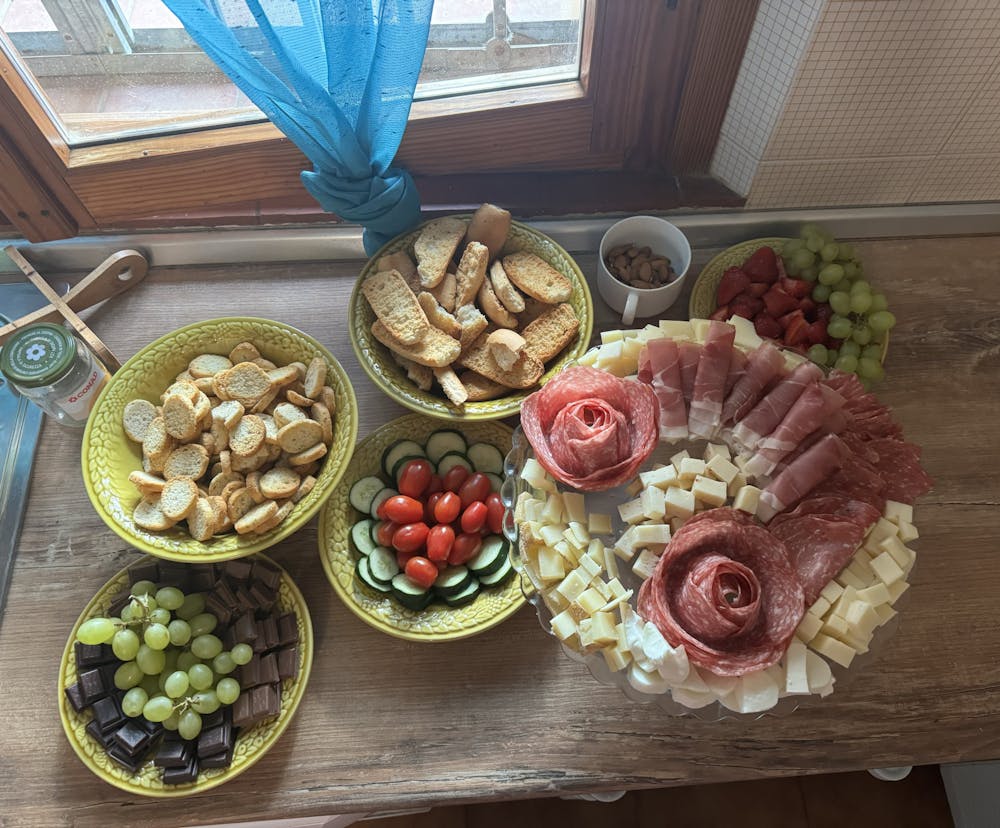Editor's note: This is the fourth article in a series written by students and faculty in a study abroad program — “Travel Writing through Italy and France” — a project-based immersive learning course to capture the flavors, culture, history and natural beauty of France and Italy. To read the rest of the series visit Class Act: Stories from the Classroom.
By Kate Farr
The charcuterie board — a rich tapestry of flavors and smells that bring people together. Whether enjoyed before a family dinner or as a meal among friends, the spread of cheeses, meats, pieces of bread, marmalades and olives can transform any gathering into a familial bond.
Charcuterie is the pairing of two French terms — “chair” meaning meat or flesh and “cuit” meaning cooked. The word was coined around the 15th century for shops specializing in cured meats, according to an article by the Dairy Farmers of Wisconsin. By using all cuts of the animal — while adding salt, herbs and spices — the art of charcuterie resulted in something truly delicious.

Our travel writing class prepared a charcuterie board as a late lunch one evening in Dijon, France. We gathered in the lush courtyard of a convent-turned hotel where we stayed for two nights. On a vacant bench, we set plates of sharp, aged cheese alongside soft, earthy varieties, which we spread on slices of crusty baguette and tart apples. Dried fruits like apricots and cranberries offered a chewy sweetness after salty bites of olives and a spicy tapenade. Juicy carmine-colored strawberries cut the richness of prosciutto and salami, freshly sliced from hocks at a nearby market.
We finished our meal with bites of dark chocolate, an assortment of French butter cookies and Dijon’s signature dessert — gingerbread. We purchased several varieties of gingerbread from the city’s last remaining gingerbread bakery, Mulot and Petijean.
Since 1796, the family-owned establishment has made this classic loaf cake with honey, hot milk, butter, flour, brown sugar, egg and salt. But the secret, they say, is in the secret blend of spices, which include cinnamon, ginger, cloves and nutmeg.
We sampled slices of the original loaf, as well as small cakes filled with jams and curds. Each variety offered a complex flavor and gritty texture. It was the perfect sweet ending to a harmonious, dynamic culinary adventure to savor the flavors and preparations of the region.
With each bite, we tasted history and tradition. It made us wonder about the history of these foods and food combinations. And at the end of the day, it connected us with city’s culture.





